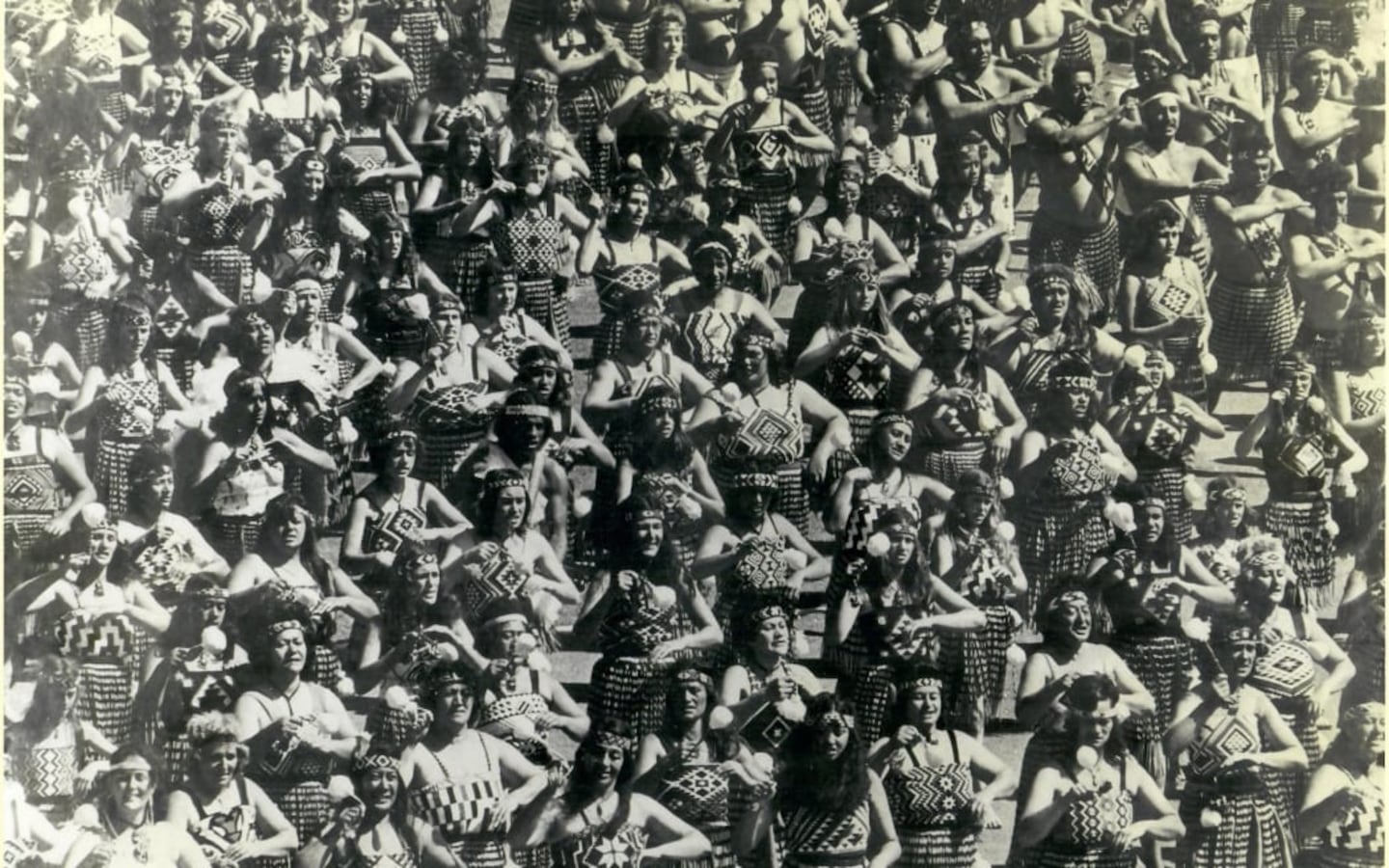This article was first published by RNZ.
Whaea Jane du Feu is not often lost for words. But asked to sum up the impact of the growth of kapa haka in Te Tauihu over the past 55 years, she pauses.
“It’s hard to describe because the impact has been so big, the growth phenomenal. It is impossible to measure. It affects everybody in such a positive, positive way.”
Whaea Jane (Taranaki Tuturu, Ngāti Tama and Te Ātiawa) has been on the kapa haka scene in Te Tauihu, the top of the South Island, since 1973.
She is one of hundreds who are expected to gather on Saturday in Whakatū/Nelson to honour 55 years of kapa haka excellence in Te Tauihu and the establishment in 1970 of the region’s governing body for kapa haka, now known as Te Tauihu Kapa Haka Inc.
“When I came to Whakatū in ’73, I’d not long got involved with the Māori Women’s Welfare League in Christchurch, so I connected with the branch here. Some of them were in the Ngāwhatū group, so I tagged along.
“At that time, there was a renaissance, if you like. Over in Wairau, you had the Waikawa Māori Cultural Party, who were based at the marae; Motueka, which was a real hub for Māori, many of whom were seasonal workers, had a group; there was one in Wairau.
“The cultural council was established with a delegate from each of those groups to run competitions and foster kapa haka and if we go back to the original founding document, it is no different to what we’ve got today … it was about fostering kapa haka, fostering the development of te reo me ona tikanga, fostering whanaungatanga across the rohe, all of those things, and of course, to have a platform for our kids.”
Whaea Jane has been a member of the cultural council since 1974, and while the numbers involved have grown exponentially since then, she says the heart of the kaupapa remains true to those who paved the way, people like Joseph and Tiro Paul in Nelson and Karaitiana (Chrise) Poki Snr in Waikawa.
“It was about and it has always been about that collectivity, that whanaungatanga, the power of the people as a collective and kapa haka was an open expression of that, because it was also a transmission of whakapapa, of history, events and, of course, our feelings and views - we could put our thoughts and feelings out on the stage without being challenged, so you could actually have your say without, you know, someone trying to cut your legs off, because that was our platform. And today, if you look at all the kaupapa that are put out on that stage, that’s no different to back then.”
Whaea Jane performed with the Ngāwhatū rōpū, which was attached to the Ngāwhatū Psychiatric Hospital, up to 1980 when the group transitioned to Te Wai Tawhiri, and then became Te Atawhai.
“There were a lot of Māori nurses [at Ngāwhatū], and they formed the group as a sort of therapy, so that’s where that started from. It was a special connection, with staff, with residents and with our Māori community at that time.
“There’s a real sort of legacy and connection in terms of that relationship, of looking after the people. Sundays we would all take kai up and we’d all have two or three hours of practice and then have kai, so it was more about whanaungatanga. And out of that, the regional group, the Ngāwhatū group was developed.”
Kia Ngāwari Kapa Haka Club, which continues to perform at the highest level today, were also there in those early days, first performing in 1974.
But the kapa haka legacy in Te Tauihu extends well beyond the stage, she said.
“You might have 40 on stage, but that’s not the whole kapa. The kapa is the 100. You have the kapa on stage, you have got all the mums and the dads and all those that come in behind them, the cooks, the drivers, the tutors, the teachers - we need to acknowledge all of those people as we celebrate 55 years of kapa haka excellence in our rohe, because we wouldn’t have any performers on stage without that extended group.”
Sonny Alesana, heamana (chair) of Te Tauihu Kapa Haka Inc, has also been heavily involved since his son Tom, now an expert in his own right, started school three decades ago.
“Being involved in primary schools and intermediates over the last 20, 30 years, there has been huge growth within the schools during that time. Every school has a kapa now, and kids want to do it. We see every First XV, every First XI now doing haka. The other big change for me is that young people are now choosing kapa over, say, rugby, whereas in the past, it had always been rugby first and then kapa; they’re taking kapa more seriously, and it has emerged as a major educational platform.
“But I think the love of the kaupapa from all involved, right from the beginning 55 years ago, that’s what has kept it alive and growing, and this 55-year milestone offers us a moment to celebrate all those who have paved the way and also uplift those who will carry the legacy forward.”
Alesana admits there have been challenges.
“I guess one of the challenges for us as a smaller rohe is around the sheer growth of kapa haka, but I say that’s a wonderful challenge to have.
“Right now, there is much to celebrate. Te Tauihu is the first to have a Tangata Tiriti (non-Māori) group perform at a regional level, it is home to the first rōpū to win the People’s Choice award at Te Matatini, we’ve hosted major national events and we still have our sights on hosting Te Matatini 2029. There’s a lot to be proud of.”
By Te Manu Korihi of RNZ.



